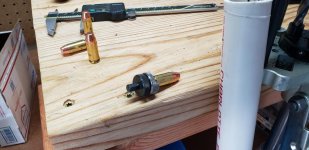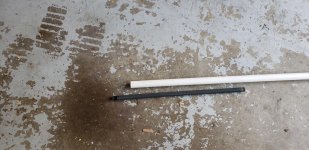MyDads38
Member
In a perfect world, all my reloads would be the same OAL. Well, they're not :-(
I use the Lee 4 die set on my Classic Turret press. The variance is +/- .02", seldom more than .04". My target COL is also 1.125" with Xtreme 165 gr FP plated bullets. From data on Hodgdons website, my load is right in the middle of min/max. Chasing perfection can drive you CRAZY! And that would be a short trip for me LOL.
I use the Lee 4 die set on my Classic Turret press. The variance is +/- .02", seldom more than .04". My target COL is also 1.125" with Xtreme 165 gr FP plated bullets. From data on Hodgdons website, my load is right in the middle of min/max. Chasing perfection can drive you CRAZY! And that would be a short trip for me LOL.


